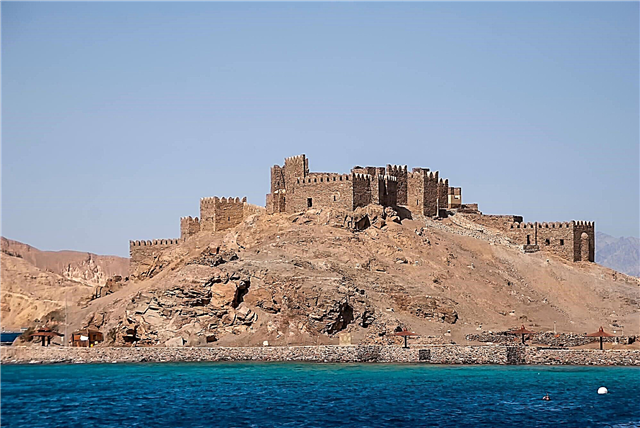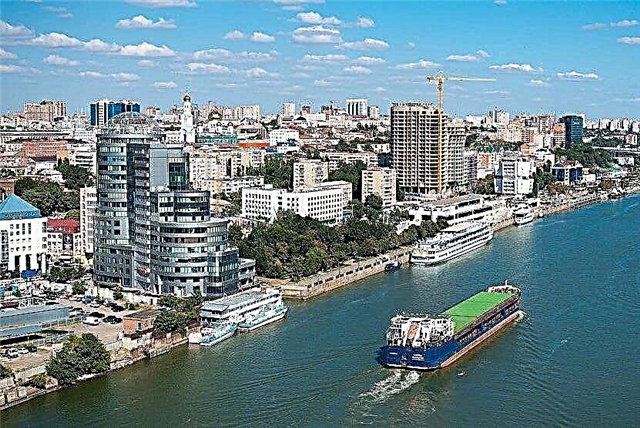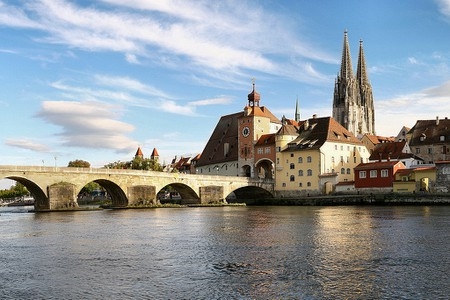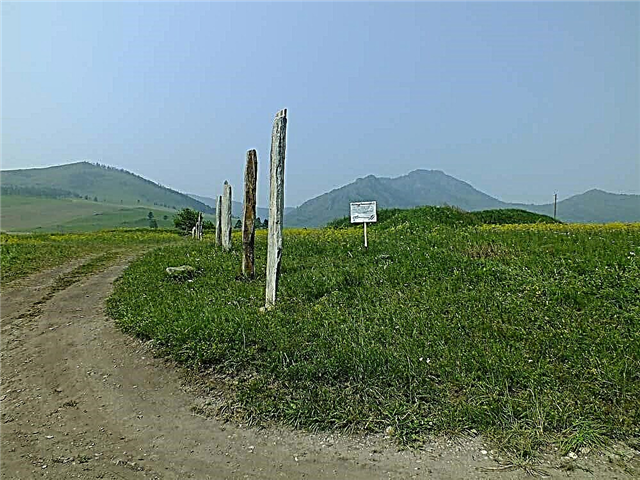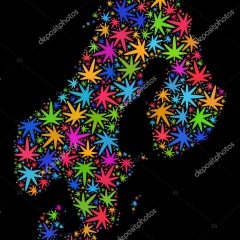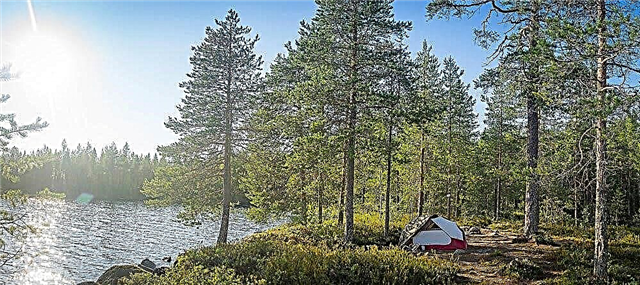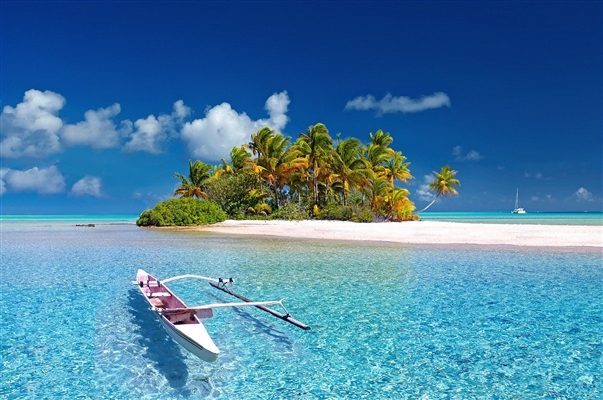The combination of two natural zones - forest-steppe and taiga, made the Perm Territory an amazingly beautiful place. Plus, a part of the Ural ridge and the majestic deep Kama make its landscapes very diverse and suitable for various types of tourism. Hiking in the taiga, mountaineering, visiting caves, river rafting and skiing are available to guests of the region in appropriate seasons.
The winters are snowy here, but not fierce, in summer it is quite hot, but without the sweltering heat. Lovers of a relaxing holiday will also find a lot of entertainment. You can visit a lot of architectural sights, museums - historical and ethnographic, fish in abundant lakes and rivers, visit numerous festivals that are regularly held here.
The most interesting and beautiful places in the Perm region
List, photos with names and descriptions of the main attractions of the region!
Kungur cave
A real business card of the Perm Territory. Natural karst underground, the seventh longest among its kind: 5700 meters of grottoes, passages and halls. There are 70 lakes and one and a half hundred unique "organ pipes" - natural vertical mines. It is cold in the cave, in some places down to subzero temperatures, so ice stalactites dating back to 12 thousand years have been preserved here.

Stone city
This is a mass of sandstone, which over thousands of years the wind has turned into a cluster of massive pillars-remnants. Before that, the river worked on the natural architecture, making arches and crevices in the rocks, making the natural formation surprisingly similar to a man-made city. By analogy, the gorges are called streets, and individual rocks have their own names. The locals called the landmark the Devil's Settlement.

Khokhlovka
There are 23 objects of wooden architecture brought from all over the region, located on 35 hectares of an open-air museum on the banks of the Kama. Inside the buildings themselves, exhibitions of local handicrafts and art have been opened, interiors of the eras, to which the buildings belong, have been restored. The territory of the complex is landscaped: cobbled streets, embankment, lighting. A tea house is open for guests.

Belogorsk monastery
An active male monastery, nicknamed for the severity of the charter "Ural Athos". Located on White Mountain, 40 km from Kungur and 70 from Perm. On the territory there is a majestic Cathedral of the Exaltation of the Cross in the neo-Byzantine style. Everything was recreated practically from scratch based on archival photographs in the nineties, after a major fire. The monastery is usually visited as part of a Kungur sightseeing weekend tour.

Usva pillars
A limestone massif with a height of 120 meters stretches for kilometers along the right bank of the Usva. As a tourist site, it is of interest to rock climbers, cavers and archeology enthusiasts. There are many caves and grottoes, and new ones are regularly discovered: the rock is quite difficult to climb and not all of them have been explored. A separate attraction is the Devil's Finger, a vertical rock ledge 70 meters high.

Kama reservoir
After the construction of the Kama hydroelectric power station, a significant area near the Kama and a number of other rivers were flooded, forming a reservoir. Historic cities and a number of industrial sites were under water, which attracts divers here. There is excellent fishing and yachting. Every summer the Kama reservoir hosts the participants of the local sailing regatta - the Kama Cup.

Plakun waterfall
One of the few Ural waterfalls. Located on the Sylva River near the village of Suksun. It begins not from the river, but a rocky crevice, forms a fifteen-meter stream and falls from a height of 7 meters, emitting a strong hum. The water is clean, suitable for drinking without treatment. It is considered a holy source, therefore it attracts pilgrims to take ablutions. The waterfall bowl is equipped with a font.

Mount Caps
A small mountain with a maximum height of 614 meters, its main feature is its location on the border between Europe and Asia. There is an observation deck at the top, which offers views of both sides of the world. They visit Kolpaki all year round, the slope is gentle and very convenient for hiking, in winter they specially tread a trail to admire the stunning snowy landscapes.

Miracle cave
A relatively small cave of Mount Kladovoy Kamen, on the banks of the Ponysh, a tributary of the Chusovaya, 512 meters long. It is not easy to find the entrance, it is a meander - a rather narrow horizontal slit. Its grottoes are replete with bizarre stalactites and lime deposits. A cave from the category of simple, special skills of a speleologist and equipment for the excursion is not needed, a flashlight is enough.

Orda cave
Near the village of Orda on the Kungur River, there is an underwater cave in karst sediments under the Kazakovskie Mountains. Rest here is meant to be special - speleodiving, scuba diving along the flooded grottoes. The total length is 4600 meters, and the dry part is only 300. It is not necessary to carry your equipment: there is a diving base on site with everything you need and experienced instructors.

Basegi reserve
The best place for ecotourism in the region. On the slopes of the Basegi ridge, there is a reserve that has sheltered hundreds of species of plants with animals, some of which are from the Red Book. Admission is allowed only by prior request for groups of up to 10 people, always with a guide. Tourists usually visit the Korostylevsky cordon, the Usva river and the Oslyanka mountain. Ski tours are provided in winter.

Cathedral Square in Solikamsk
Three sights of Solikamsk are located here at once. The cathedral bell tower is a Russian analogue of the Leaning Tower of Pisa, its vertical inclination is determined even without special devices, by eye. The milestone of Solikamsk indicates the beginning of the direct path, nicknamed the Tsar's Road, from the center of Russia to Siberia. And the Trinity Cathedral is a 17th century building, the largest and most beautiful among the religious sites of the region.

Vishersky reserve
It was founded on a territory that has gathered several natural zones at once within the boundaries of 240 thousand hectares: dark coniferous taiga forest, "bare" mountains, swamps and water surface. There are 4 types of excursions around the reserve with different lengths of the route, during which you can observe the local fauna and admire nature. The protected landscape of Vetlan deserves special attention - a huge rock-rock, equipped with an observation deck.

"Perm Gate"
In the "Park of Stones" in Perm, there is an art object by Nikolai Polissky made of intertwined spruce logs in the form of a four-sided U-shaped arch. A cube with 12-meter edges is illuminated from the inside at night and complemented by an interactive sound installation. It has become an unofficial symbol of the city and has been subjected to acts of vandalism more than once. The structure is considered temporary and can be dismantled at any time.

Lake Chusovskoe
Shallow vast lake among the Permian bogs. The area around is sparsely populated, which is associated with underground nuclear explosions carried out here, which formed nearby Lake Nuclear. Within the limits of Chusovsky itself, the background is normal and it is allowed to catch fish abundant here (pike, ide, crucian carp, burbot, pike perch, etc.). True, there are no roads here, you can only get there by motor boat along the Visherka River.

Blue lakes of Aleksandrovsk
Near the town of Aleksandrovsk in the north of the region there is a scattering of mountain lakes filled with turquoise-colored water. The most interesting are man-made ponds, former limestone quarries.The limestone suspension gives the unusual color, but fish are found here and the water is suitable for swimming. You can settle down at the recreation center built here, there is also an opportunity to rent equipment for spearfishing.

Perm-36
A museum with a sad history dedicated to the prisoners of repression who languished in the Perm ITK-36 near the village of Kuchino. Among the famous prisoners of the colony there are many Soviet dissidents, for example Natan Sharansky and Gleb Yakunin. There was also a building for especially dangerous recidivists who were kept separately. In 1988, the institution was liquidated, but 10 years later it was restored and turned into a museum.

Ethnographic Park of the History of the Chusovaya River
The main part of the exposition of the village-museum is the life of the Perm peasantry of the century before last. In addition to the standard hut of those years, there is a smithy, a fire tower, a grocery store, a wooden doll theater (booth) and a pottery workshop. All exhibits are genuine, real antiques. The heart of the park is the museum of the famous Yermak. There are also collections of personal belongings of local writers, including Astafiev and Green.

Ust-Borovsk salt plant
"Permyak - salty ears" was called before the inhabitants of the region. The main source of income for these lands was the trade in salt and it is not surprising that the old buildings on the territory of the plant for its processing were turned into a museum. The equipment and structures of the 19th century have been preserved here: a brine-lifting machine, salt chests, an office hut, a security post, warehouses, breweries, where the product and hand tools of Perm salt-makers were evaporated.

Zhigalan waterfalls
It is not easy to get here, but among the Perm sights, waterfalls are one of the most visited. This is a whole cascade with a length of 550 meters with a level difference at the extreme points of more than 600! The largest is Nizhny, 15 meters high. The water is clear and icy. The place is quite crowded, but still wild. It is quite easy to meet local animals here, so you need to be more careful - bears are found here.

Steam locomotive cemetery
The remote station Shumkovo in the middle of the forest became a reserve base for steam locomotives. Previously, it was a secret base for the conservation of rolling stock in case of war, but in the nineties it was abandoned. There are dozens of locomotives here and it is not forbidden to personally examine them, pull the levers and look into the boilers. Train carriages put on a seasonal standby are also driven here, but access to them is prohibited, there is a guard.

White Sea Berezniki
A unique man-made object is a slime lake at the Bereznyakovsky soda plant. Wastes from production give its surface an azure color, and the coastal sand makes it snow-white. You will have to admire the beauty from afar - swampy shores and unsuitable for swimming water. But the lake is not poisonous, according to the assurances of the locals, seagulls with unusual, pale pink feathers live here.

Perm Cathedral Mosque
The mosque was built in 1903 at the expense of Perm Muslims, including several merchant Tatar families. The peculiarity of the building is in a mixture of oriental and Russian motives in the external design. It was used as a religious building until 1937, later as a warehouse. In the nineties, the building was returned to the Muslim community, now it is the main place of worship for believers in Perm.

Holy Trinity Stefanov Monastery
The history of the monastery began when a small church was illuminated in 1790. Over time, the dilapidated wooden building was replaced by a majestic temple, which was given the rank of a cathedral. In the post-revolutionary period, the premises were transferred to the city bakery as a warehouse, in the nineties the building was returned to the church, and its original appearance was restored. Now at the monastery there is an icon-painting workshop, where future artists are trained.

Man-made canal Kopan
The canal was dug to provide the Ochersky iron-making plant of the Stroganovs with water as a source of energy for mechanisms powered by a water wheel. True, the project failed, although the work was titanic: the passage was made by hand in the rocks. Now it is a popular tourist destination, as its bed is a cascade of artificial waterfalls with a complex wall attractive for climbers.

Vakutin stone
The rock itself is not particularly remarkable, they climb it for the sake of a stunning panorama that opens from it. View of a huge round meadow formed by the loop of the Irgina River and the forest hanging over it. A breathtaking illusion of free flight is created. In the river itself, the lucky one can fish out a valuable trophy: the legendary Ural grayling. Another plus of the attraction is that it is easily accessible by car.

Perm Museum of Local Lore
The museum has dozens of branches scattered around the edge. The main building is the former house of the steamer Meshkov directly in Perm. Its collections and exhibitions are extensive and varied, trying to cover all the milestones in the history of these lands. From archaeological artifacts from excavated ancient settlements to the history of the revolutionary movement in the region. Often there are various promotions designed to increase interest in history, such as free visiting days with exciting excursions.

Museum of History "Motovilikhinsk Plants"
In two parts of the museum: in the open air and in the building of the 19th century, the history of the copper smelter is presented, and later - the arms production and samples of its products. Among them, there are old cannons of the pre-Napoleonic era, artillery systems of the Great Patriotic War, a quarter of the cannon artillery that defeated the Nazis during the war years was fired here. So is modern technology: ballistic missiles, multiple launch rocket systems. The visit is free.

Perm State Art Gallery
50 thousand works of art in one building. Time period: from the earliest (rock paintings, ceramics) to the present. The expositions are distributed chronologically and by authorship: Russian, Western European, Eastern. After the transfer of the building of the museum to the Russian Orthodox Church, the exhibitions were moved to the premises of the former rocket school. A special pride is the collection of wooden sculptures made by Perm craftsmen.

Happiness is not far away
An art object by Boris Matrosov, which has become a symbol of Perm. On the Kama embankment, this optimistic phrase is reproduced in huge red letters. After being discharged from the reservoir, the inscription was submerged by a third, which made it very popular. The facility regularly suffers from vandals and small boat drivers, but is constantly being restored. He is widely known for the opening credits of the series "Real Boys".


